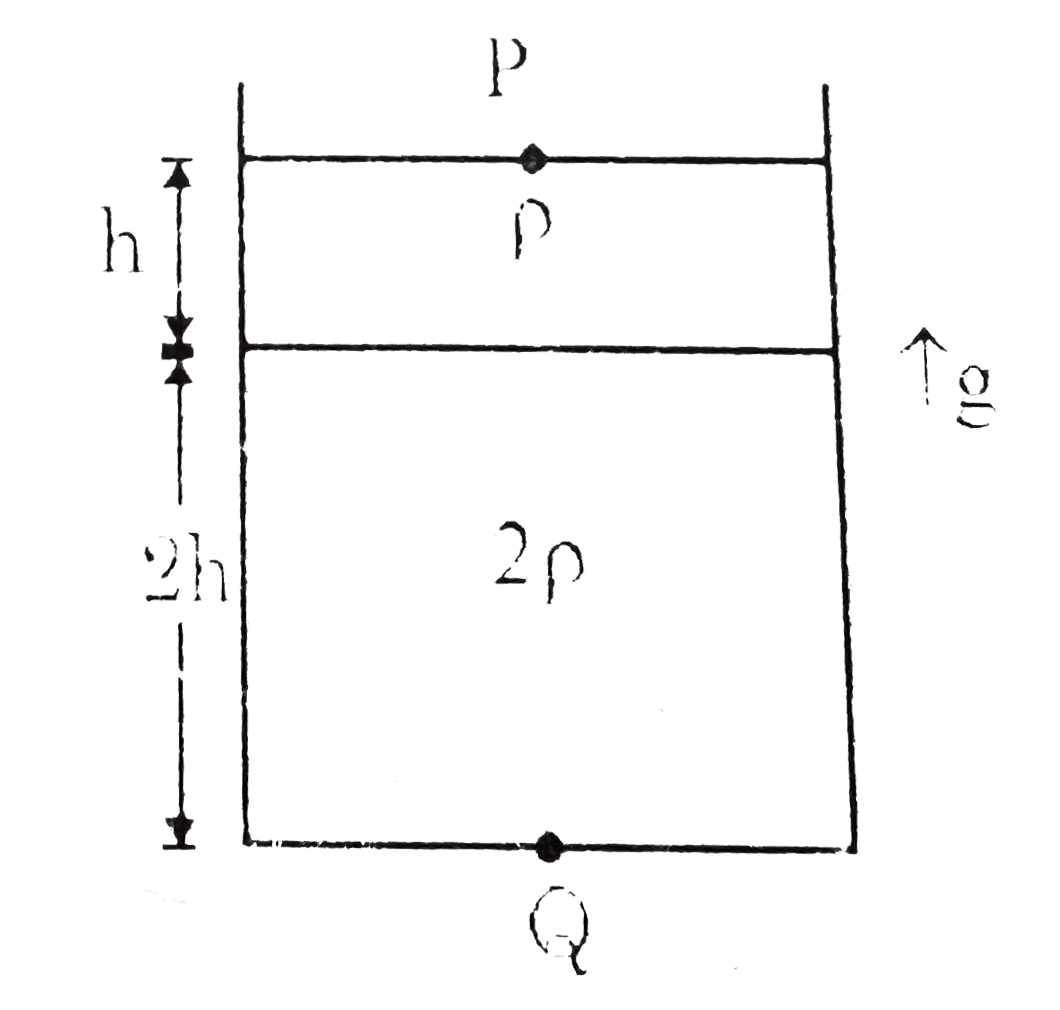Consider the equations and . In an elector acceleration upward
Both the equations are valid
The first is valid but not the second
The second is valid by not the first
Both are invalid
The correct Answer is:B
Similar Questions
Knowledge Check
A cylindrical tank contains water up to a height H. If the tank is accelerated upwards with acceleration a, the pressure at the A is p1. If the tank is accelerated downwards with acceleration a the pressure at A is p2. Then
 Ap1<p2Bp1=p2Cp1>p2DData insufficient
Ap1<p2Bp1=p2Cp1>p2DData insufficientA container having two immiscible liquids of densities 'p' and '2p' moves with an upward acceleration a=g The values of PQ−P0 is (where P0 = atmospheric pressure)
 A5pghB10pghC2.5pghD7.5pgh
A5pghB10pghC2.5pghD7.5pgh
A cylindrical tank contains water up to a height H. If the tank is accelerated upwards with acceleration a, the pressure at the A is p1. If the tank is accelerated downwards with acceleration a the pressure at A is p2. Then

View SolutionA container having two immiscible liquids of densities 'p' and '2p' moves with an upward acceleration a=g The values of PQ−P0 is (where P0 = atmospheric pressure)

View SolutionIn the derivation of P1−P2=ρgz it was asumed that the liquid is incompressible. Whuy will tis equation not be stictly valid for a compressible liquid?
View SolutionIn the derivation of P1−P2=ρgz it was asumed that the liquid is incompressible. Why will this equation not be stictly valid for a compressible liquid?
View SolutionIn the figure shown, acceleration of 1 is x (upwards). Acceleration of pulley P3, w.r.t. pulley P2 is y (downwards) and acceleration of 4 w.r.t. to pulley P3 is z (upwards). Taking upward +ve and downward -ve then

Column IColumn II(A)Absolute acceleration of 2(p)(y−x)downwards(B)Absolute acceleration of 3(q)(z−x−y)upwards(C)Absolute acceleration of 4(r)(x+y+z)downwards(s)None
View SolutionABC is an isosceles triangle described in a circle of radius r.If AB=AC and h is the altitude from A toBC, then limh→0Δp3 equals to [where A is the arca and P is the perimeter of the triangle ABC]
View Solution
